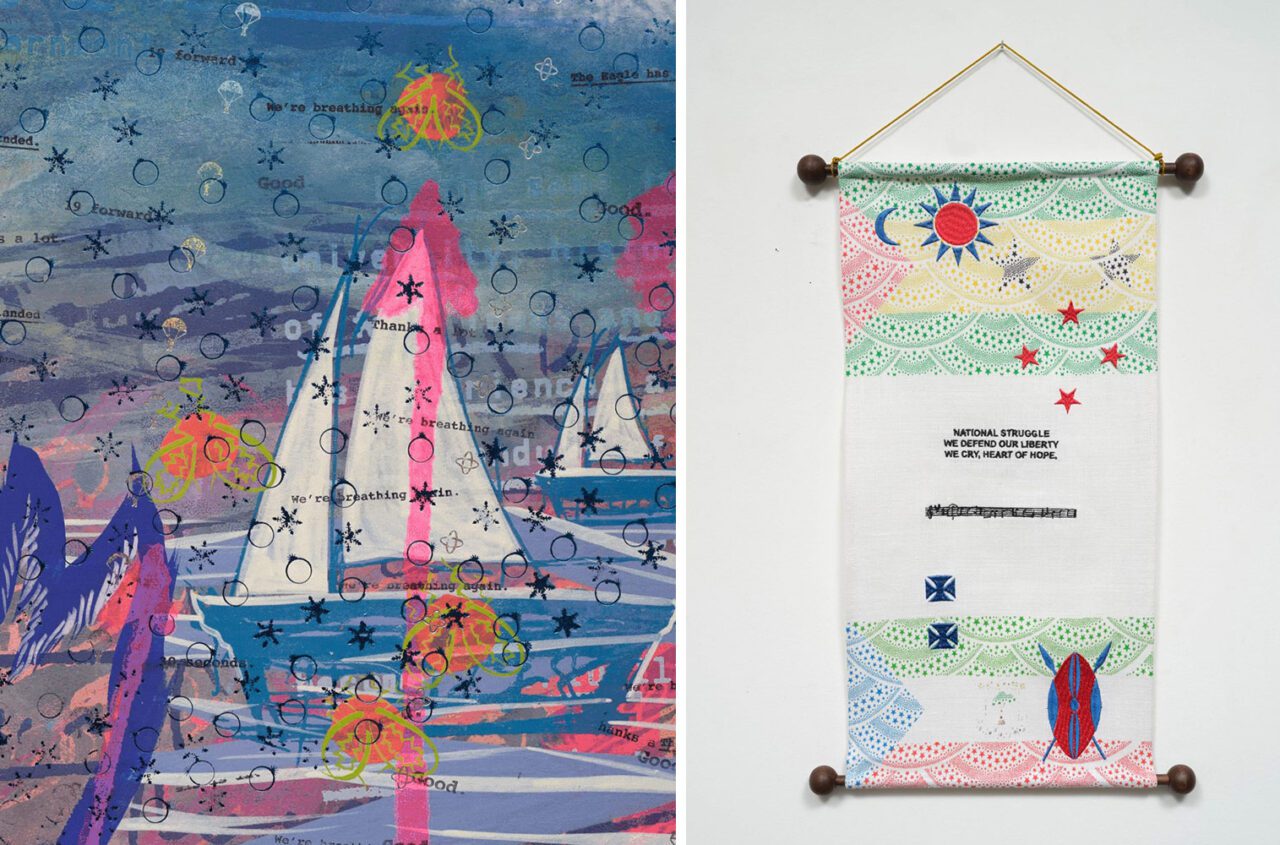PREVIEW: Tammy Nguyen-A Comedy for Mortals-Paradiso
Tammy Nguyen creates paintings, drawings, artist books, prints, and zines that explore the intersections between geopolitics, ecology, and lesser-known histories. A story teller, Nguyen’s multidisciplinary practice takes two forms—her more traditional fine arts practice, which encompasses her lush, dense paintings, as well as her prints, drawings, and unique artist books. Nguyen’s work aims to unsettle, and the tension between the artist’s elegant forms and harmonious aesthetics often belies the nature of her content. The confusion this dissonance creates becomes generative, opening space for reevaluation, radical thinking, and the dislodging of complacency.
By Efi Michalarou
Photo: Lehman Maupin Gallery Archive
Across a series of new paintings and works on parchment, Tammy Nguyen’s solo exhibition “A Comedy for Mortals: Paradiso” marks the culmination of a three-part exhibition series based on the Divine Comedy, Dante Alighieri’s canonical masterpiece of Western Literature. Previously, “A Comedy for Mortals: Inferno” opened in Seoul in March 2023, and “A Comedy for Mortals: Purgatorio” opened in London in 2024. Paradiso comes on the heels of solo exhibitions at the ICA Boston, Massachusetts, in 2023, and the Sarasota Art Museum in Florida in 2024. Nguyen’s multidisciplinary practice explores the intersections between geopolitics, ecology, and history, using her unique visual language to intertwine disparate subjects and explore the moral gray areas that permeate global history. Across Nguyen’s work, the tension between her elegant forms and harmonious aesthetics often belies the nature of her non-linear storytelling. Nguyen’s research-based process involves a close reading of foundational texts across the Western canon. Formally, she works across mediums including printmaking, ink drawing, and painting to examine the contrast between text and image, creating rich visual metaphors within layers of material. By generating compositional push and pull between the visible and invisible, she invites the viewer to question preconceived notions of history. Often ripe with inversion, Nguyen’s work presents fluid, spiritual worlds. In her version of The Divine Comedy, Dante’s three epics act as a metaphor for geopolitics during the Cold War. In “Inferno”, Nguyen tracked Dante and Virgil’s descent into hell against the Space Race, and in “Purgatori0”o, she compares Dante’s ascent of Mount Purgatory to the 1955 Bandung Conference and the Grasberg Mining project*. In “A Comedy for Mortals: Paradiso” Nguyen ascends into the celestial heavens through a body of new paintings and prints on parchment. Her work chronicles Dante’s journey into the afterlife, where she explores the good and evil territories of beauty, love, and knowledge. Nguyen sets the scene for Dante’s journey against the Cold War-era Space and Arms Race, which, on one hand, accelerated advancements in scientific knowledge and space exploration, and on the other, accentuated the looming threat of natural disaster, war, and the “military-industrial complex.” Always in a state of flux, Nguyen’s new work presents historical and divine subjects in sublime, floating environments, often seen suspended against an ornate backdrop of lush vegetation, abstract forms, and subversive symbols and motifs. The paintings in the exhibition are marked by distinct characters and events—from eagles, Frankenstein, Dante, and Eisenhower, to the moon landing, Kennedy’s notes from the Cuban Missile Crisis, and Eisenhower’s 1961 farewell address. Using images and texts sourced from public archives, the characters in Nguyen’s version of paradise represent either divine insight or cautious warning. The latter is especially apparent in Nguyen’s paintings that feature Frankenstein, who appears in scenes of natural disaster, punctuated by rhythmic stamps of Eisenhower’s portrait. Standing on Mount Tambora—the volcano whose 1815 eruption sparked the global climate crisis that inspired Mary Shelley’s novel—Frankenstein alludes to atomic technology and the ongoing threat of destruction. In several works on view, an eagle motif represents justice; these birds are seen soaring diagonally across lavish, sunset-toned atmospheres. Furthermore, the exploration of imperial structure is foundational to the exhibition, using Dante’s Paradiso as a key text to unpack symbols and themes central to its ideologies. This is especially apparent in the exhibition’s central work, Love Justice, You Rulers of the Earth (2025), where this titular phrase is spelled out by a giant eagle emerging from the center of the multi-paneled, cathedral-like composition. The exhibition also includes new prints on parchment, depicting characters encountered on Dante’s spiritual journey. Here, he meets Beatrice, the love of his life, who replaces Virgil as his guide. In Nguyen’s new etchings, she uses compounding printmaking techniques, including intaglio and screen printing, layering upon copper plates previously used in Inferno and Purgatorio. These prints reference Dante’s beatific ascent, marking a return to the body as the ultimate vessel of wisdom and knowledge and to nature as the ultimate source of beauty and structure in the celestial realm.
*The Grasberg Mining Project, located in Papua, Indonesia, is one of the world’s largest gold and copper mines. Discovered in the late 1980s, it produces significant amounts of copper, gold, and silver through open-pit and underground mining. Operated initially by Freeport-McMoRan, Indonesia now holds majority ownership. The mine is crucial to Indonesia’s economy but has faced environmental and social challenges, including deforestation and community displacement. Over time, the Indonesian government has increased control to ensure greater local benefits and environmental oversight. Grasberg remains a key global resource for copper and gold production.
Photo Left: Tammy Nguyen, From the First Hour to the One after the Sun (detail), 2025, Watercolor, vinyl paint, pastel, silkscreen printing, rubber stamping, hot stamping, and metal leaf on paper stretched over wood and gator board panel, 70 x 48 x 2 inches, 177.8 x 121.9 x 5.1 cm, © Tammy Nguyen, Courtesy the artist and Lehman Maupin Gallery. Photo Right: Tammy Nguyen, Revolutions of the Same and the Other (São Tomé and Príncipe, Equatorial Guinea), 2024, Embroidered Belgium linen works with wooden dowels, sound elements, 22 1/2 x 13 inches, 57.1 x 33 cm, © Tammy Nguyen, Courtesy the artist and Lehman Maupin Gallery
Info: Lehman Maupin Gallery, 501 West 24th Street, New York, NY, USA, Duration: 5/6-15/8/2025, Days & Hours: Tue-Sat 10:00-18:00, www.lehmannmaupin.com/
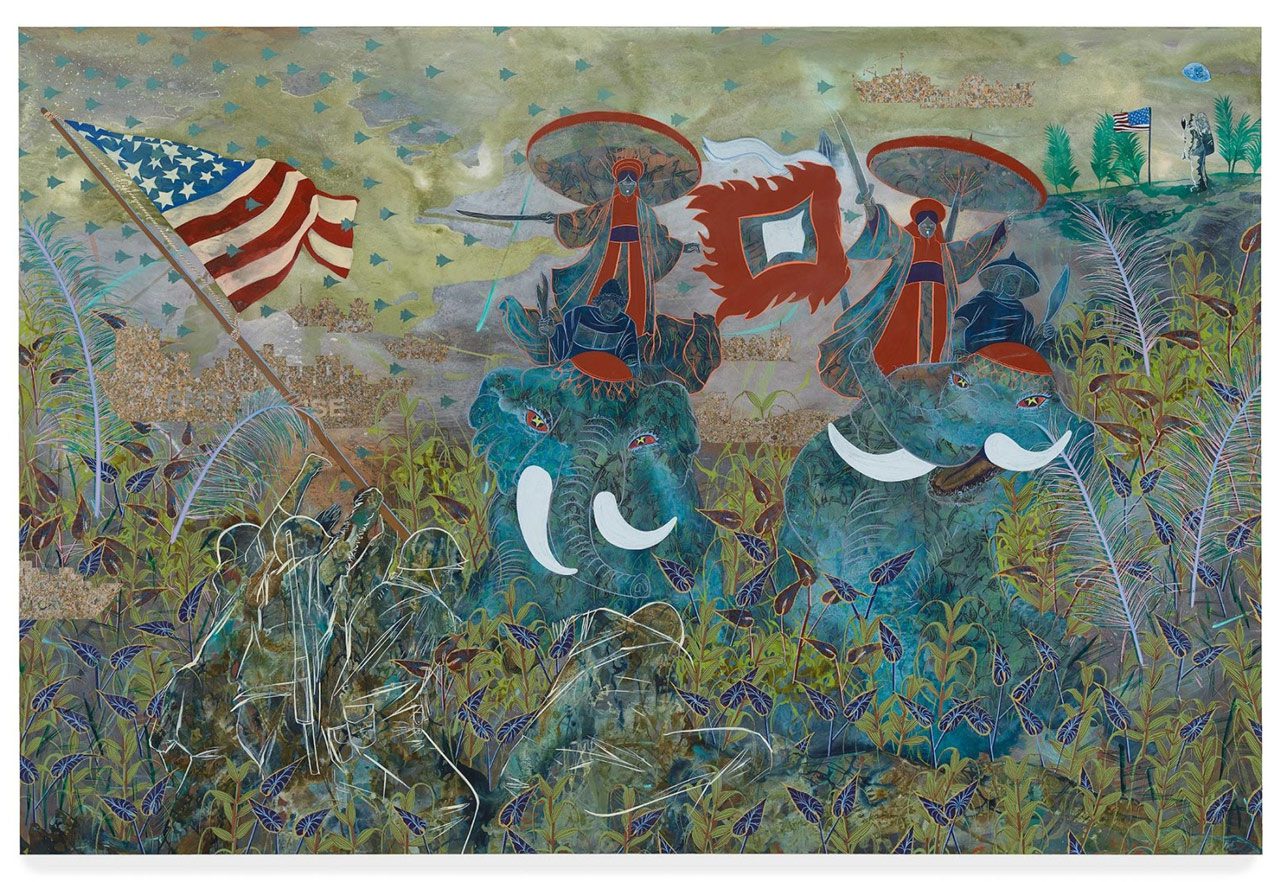
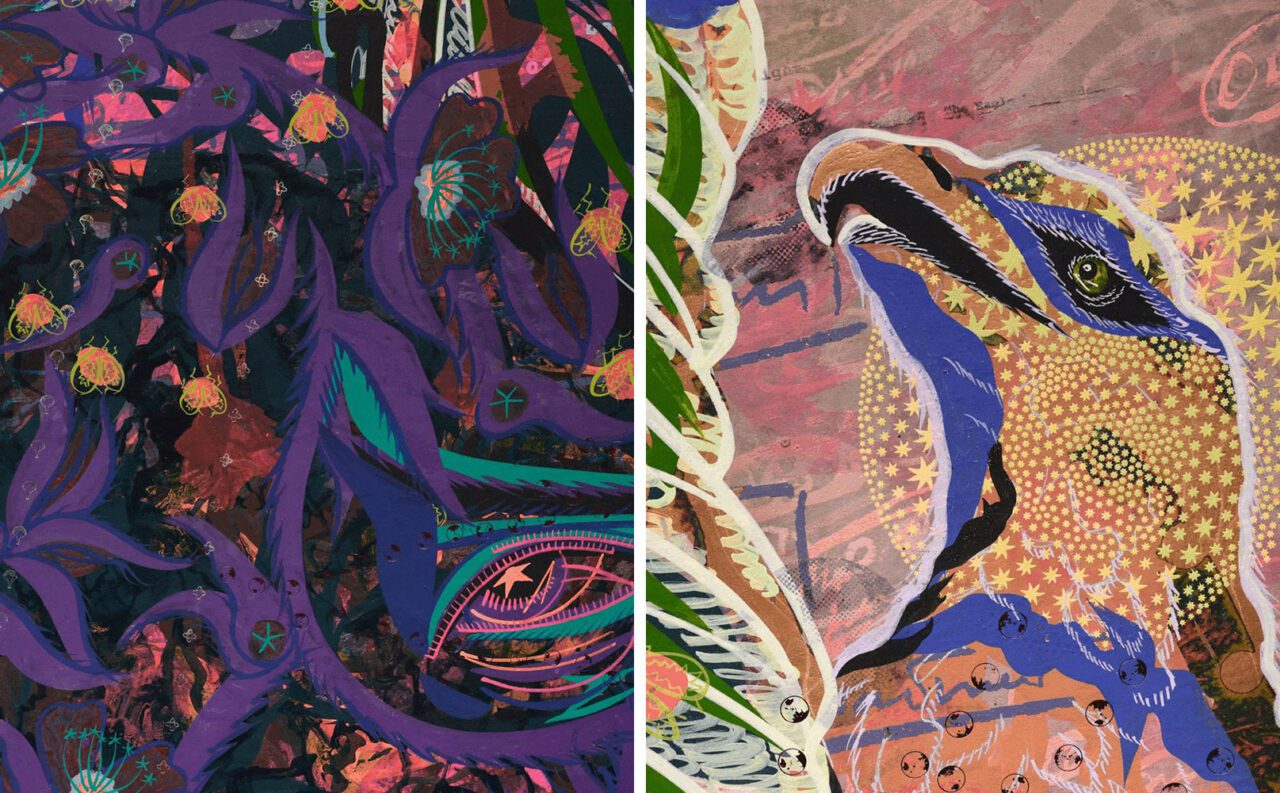
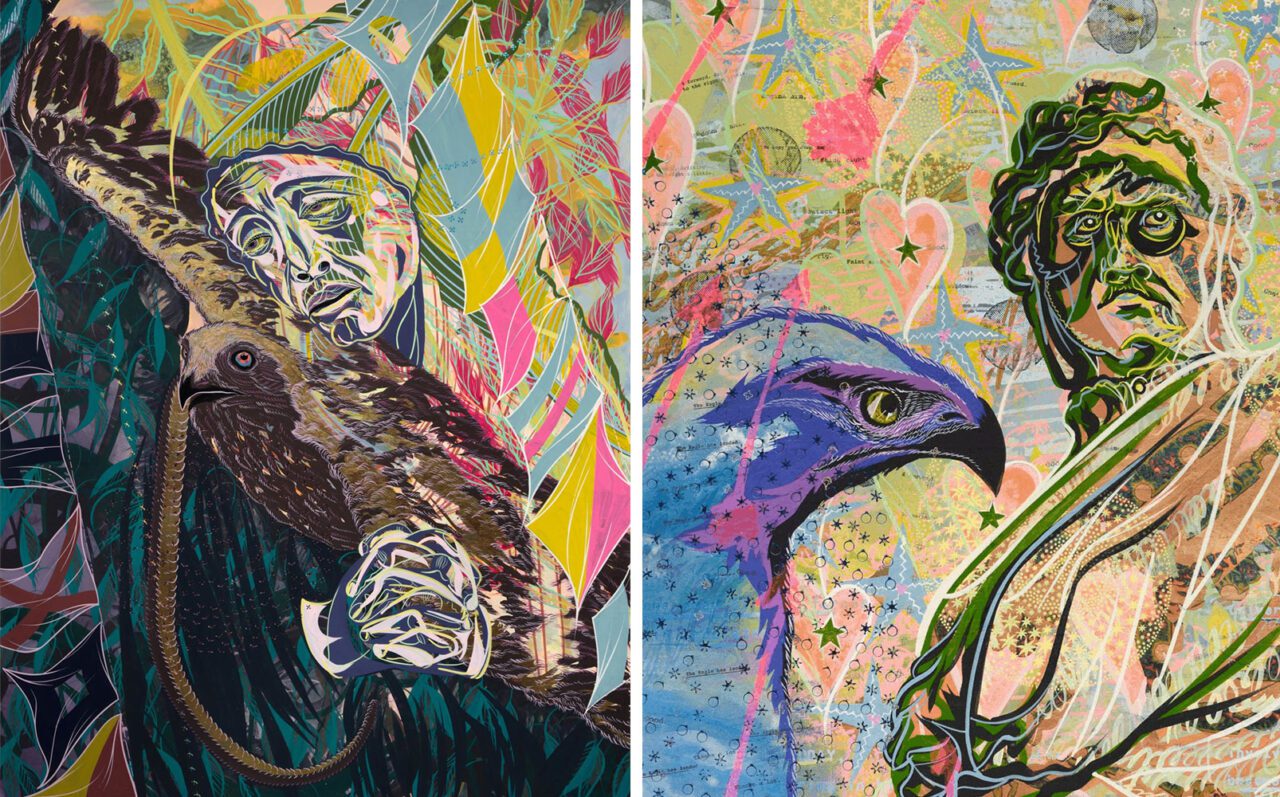
Right: Tammy Nguyen, From the First Hour to the One after the Sun (detail), 2025, Watercolor, vinyl paint, pastel, silkscreen printing, rubber stamping, hot stamping, and metal leaf on paper stretched over wood and gator board panel, 70 x 48 x 2 inches, 177.8 x 121.9 x 5.1 cm, © Tammy Nguyen, Courtesy the artist and Lehman Maupin Gallery
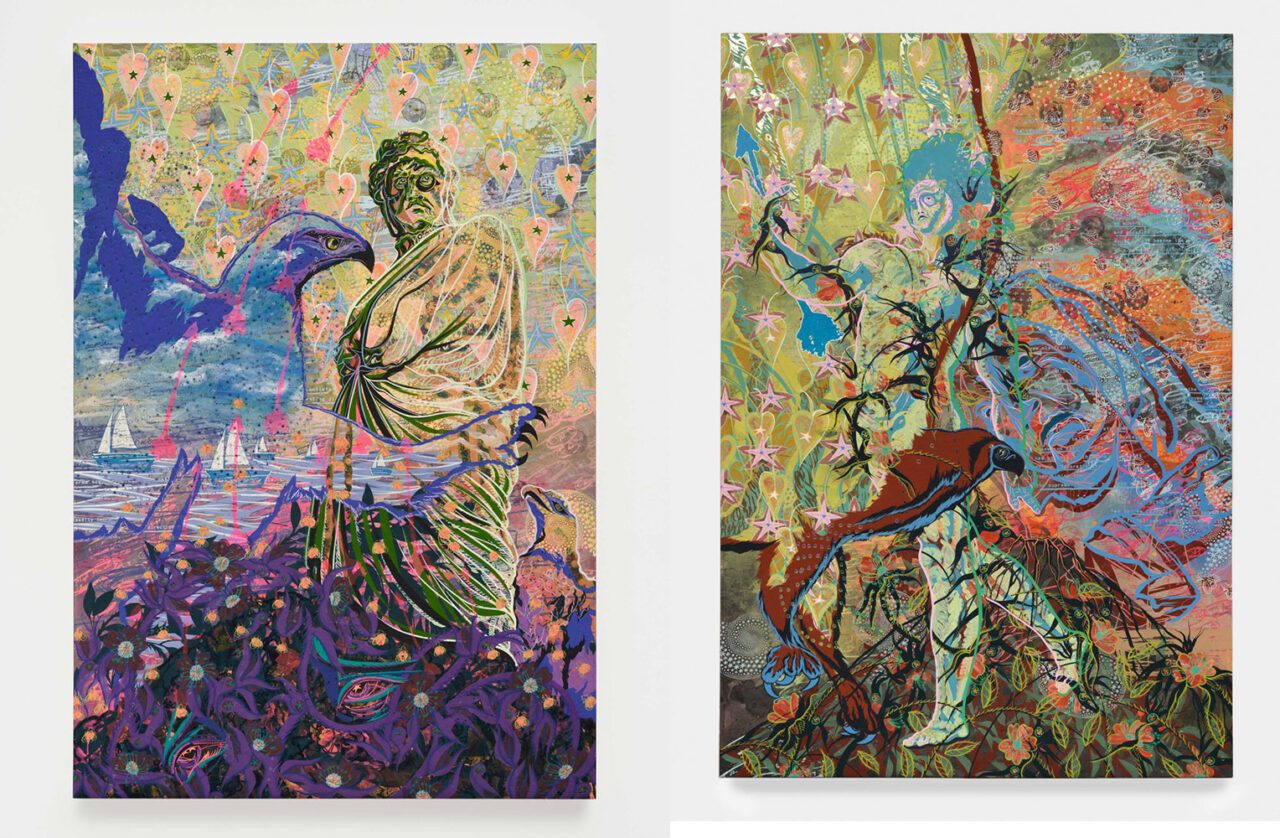
Right: Tammy Nguyen, O Good Apollo, 2025, Watercolor, vinyl paint, pastel, silkscreen printing, rubber stamping, hot stamping, and metal leaf on paper stretched over wood and gator board panel, 70 x 48 x 2 inches, 177.8 x 121.9 x 5.1 cm, © Tammy Nguyen, Courtesy the artist and Lehman Maupin Gallery

